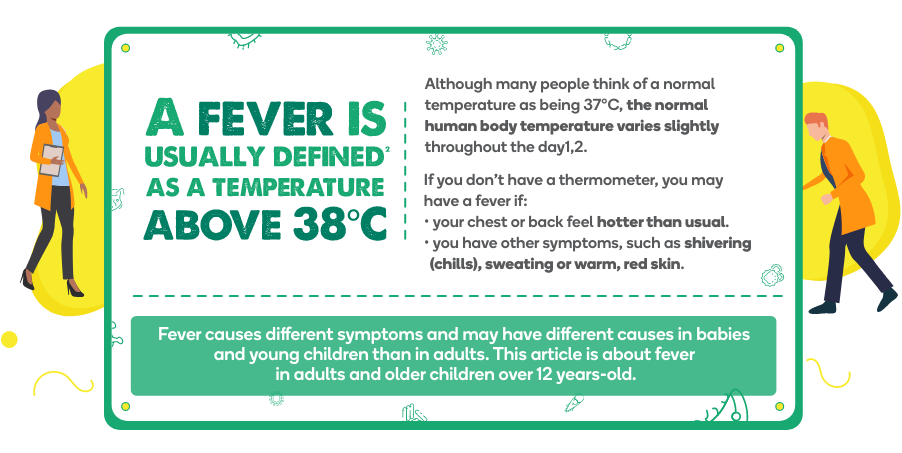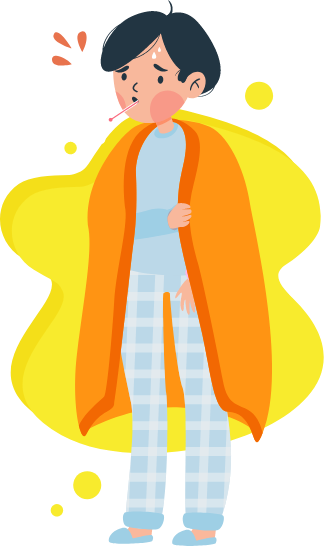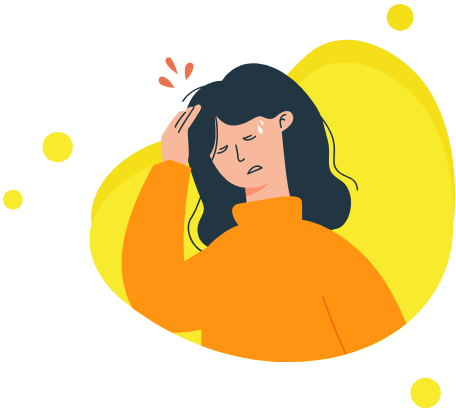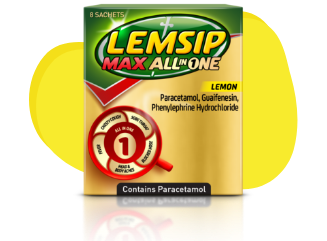
If you don't have thermometer, you may have a fever if:
- you chest or back feel hotter than usual
-you have other symptoms, such as shivering (chills), sweating or warm, red skin.
There are lots of causes of high temperature, but the most common is because your body is fighting an infection1. The other symptoms you’ll get will depend on the cause, but it’s common to feel tired, be offyour food and have a headache1.
Your body has thousands of feedback mechanisms which keep temperature, fluid balance and much else stable. That’s important because all the processes in your body work best under very precise conditions.
The white cells in your blood help you to fight off invaders, including fever. When you have an infection, one of the jobs of your white cells is to release chemicals called pyrogens. These make their way to the hypothalamus in your brain, which is your body’s thermostat. Pyrogens help reset the thermostat to a higher level, leading to a fever1.
Fever might play a role in making it harder for germs to multiply, as well as helping the immune system to act more effectively3. However, it can also make you feel miserable, with increased sweating which can lead to dehydration. Importantly, a fever that goes on for too long can damage your body, so the body has inbuilt mechanisms that bring your fever down over time3.

At the moment, it’s hard to move without hearing about coronavirus. There are actually several coronaviruses – the one causing the current pandemic4 is officially called SARS- COV-2, and causes a disease called COVID-19. However, many people just refer to it as coronavirus.
Fever is one of the most common symptom seen in coronavirus infection – in one of the earliest major studies of coronavirus from China, up to 9 in 10 people get it at some stage5.
The three main symptoms of coronavirus infection listed by the NHS are5a :
- fever (the skin of your back or chest feels hot – you do not need to use a thermometer to test it). - A loss of, or change to, your sense of smell or taste. - A new, continuous cough
Symptoms include5:








If you have a fever or cough, you need to assume you have coronavirus and self-isolate for at least 7 days7,8. If your fever has settled after 7 days, you can stop self-isolating, even if you still have a cough. However, if you still have a fever or feel generally unwell, you should continue to self-isolate8.
If you have fever, cough or change to your sense of smell or taste, you can access a coronavirus test which will tell you if you have the infection9. If you become more severely unwell – for instance with severe shortness of breath, feeling too unwell to do any of the normal things you normally do etc – you may need to seek medical help. Use the NHS.


You can treat your own symptoms at home, just as you would other viral infections that cause coughs, colds and fever10.

In recent years, there has been much more awareness of the risk of sepsis. However, there are lots of different terms which can get confused11,12:



Sepsis is always a medical emergency11. Young children and babies often have different symptoms of sepsis from adults12.:
In adults and older children, you should always seek emergency medical help if you (or another adult) develop any of these signs12,13:
- Slurred speech or confusion.
- Extreme shivering or muscle pain.
- Passing no urine (in a day).
- Severe breathlessness.
- It feels like you’re going to die.
- Skin mottled or discoloured.
You may also have11,13: - Shortness of breath with rapid breathing rate. - Rapid heart rate. - Low blood pressure, making you feel dizzy or lightheaded. - A rash that doesn’t fade when you press a glass against it.

Fever is a symptom, rather than a condition in itself. It’s very common and is usually due to your body fighting off an infection1. There are different types of fever depending on the condition causing it. For instance, if you’ve been to Africa or Asia and have caught malaria, you may get a fever every day, every 2 days or every 3 days1. In between, your temperature may be normal.
Among the most common infections causing fever are:




Fever on its own doesn’t ‘need’ treatment – it’s the conditions that cause it that may need to be treated. However, if you have a fever because of a condition like ‘flu or a viral infection, you’ll often have other symptoms like headache, tiredness or muscle aches. A high fever can also make you feel sweaty and uncomfortable.
If you have a mild illness with a fever, including mild symptoms of coronavirus10, you can relieve your symptoms with10,15:






As well as relieving pain, paracetamol can also lower your temperature. Combination products such as Lemsip, which contains a decongestant (phenylephrine) as well as paracetamol, can offer relief of aches and pains, nasal congestion and sore throat as well16,17.
Lemsip Cold & Flu products are suitable for people over 16 years-old16,17.


